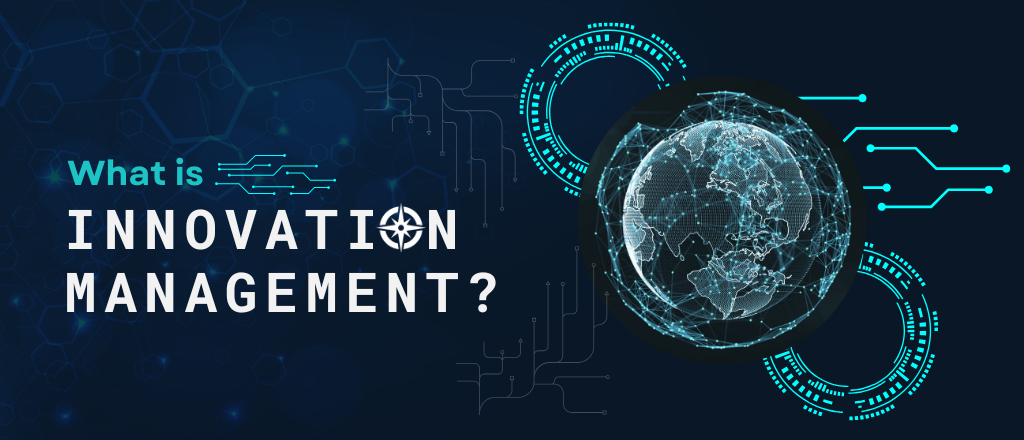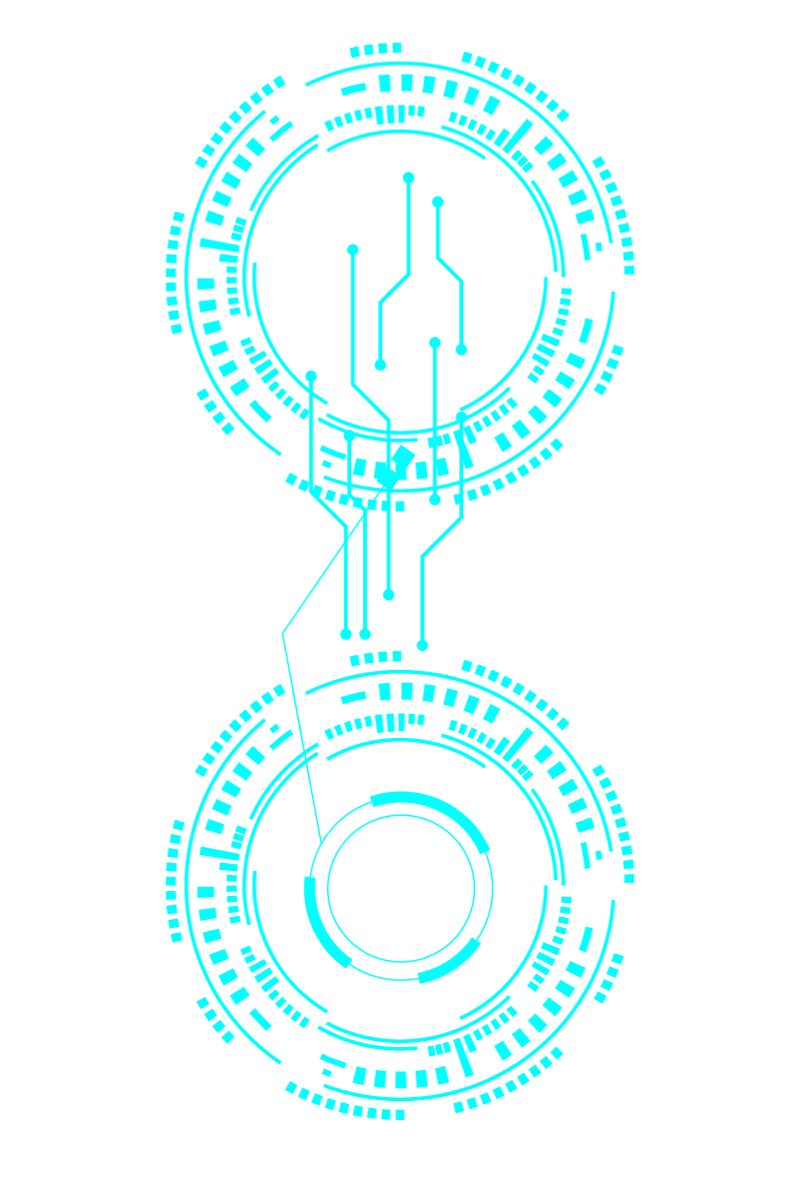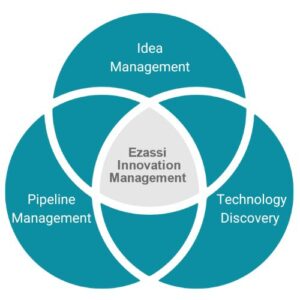
What is Innovation Management?
Navigating Innovation Management:
Implement a Scalable Process and Engaging Platform for Enterprise Ideation and Collaboration Creating Open Innovation Solutions
Regardless of your organization’s innovation portfolio size or scope, every business needs a strategy and competitive advantage for growth and technological advancement. Supporting an innovative culture and adopting an innovation management platform across your company assesses valuable KPIs of the current pipeline and promotes future opportunities through the transformative power of innovation.
-
Types of Innovation in Innovation Management
Innovation is not one-size-fits-all. Within innovation management, there are three core types of innovation—incremental, breakthrough, and disruptive—each with distinct characteristics and impacts.
- Incremental Innovation: This approach focuses on making small, continuous improvements to existing products, services, or processes. Think of it as giving a familiar tool a new, sharper edge: a grocery store adding self-checkout stations, or a phone app refining its interface with frequent updates. These steady enhancements help organizations remain competitive without radically altering their core offerings.
- Breakthrough Innovation: Unlike incremental changes, breakthrough innovation takes a significant leap forward within an established category. Imagine a new medical device that drastically improves diagnosis within its field, or a high-speed train that shortens travel time between two major cities. These advancements open up new possibilities and give companies a clear edge, but remain within the current market framework.
- Disruptive Innovation: This is the game-changer—the kind of innovation that creates entirely new markets or rewrites the rules of engagement in existing ones. Classic examples include the arrival of digital photography upending the film industry, or streaming services like Netflix transforming the way people consume television and movies. Disruptive innovations often start at the fringe, but when they take hold, they can rearrange the competitive landscape altogether.
-
Innovative Culture and the Innovation Manager’s Role
-
The Key Pillars of Innovation Management
-
Tools and Techniques for Innovation:
Idea Management, Pipeline Management, and Technology Discovery Software & Innovation Services
-
The Benefits of Innovation Management
Defining Innovation Management:
Innovation management is the process of nurturing and guiding the development of new ideas, products, services, or processes within an organization. It’s the strategies, idea stage gate and workflows that move creative ideas, novel technologies, or key market insights through an efficient and transparent pipeline of challenge solvers and intrapreneurs to drive sustainable growth and gain a competitive edge.
Why is it significant?
Innovation management is necessary to be adaptable and resilient and to thrive in a rapidly changing world. By fostering a culture of innovation, organizations can stay ahead of the curve, adjust to market demands, and outshine their competitors.
Types of Innovation: Incremental, Breakthrough, and Disruptive
When it comes to innovation, not all ideas have the same impact. There are three Horizons that organizations should navigate:
- H1 (Incremental Innovation): Think of this as continuous improvement on what already exists. Near-term goals such as yearly model upgrades and user experience tweaks are incremental innovations for small but meaningful enhancements to existing products, services, or processes.
- H2 (Breakthrough Innovation): This is when a step change occurs—an advancement that significantly elevates an existing solution above the competition. Breakthrough innovations often emerge from research and development sprints and can propel a product or service into a new areas for growth in expanding markets.
- H3 (Disruptive Innovation): Disruptive ideas often begin at the margins and, over time, transform entire markets or industries. These long-term innovations fundamentally alter consumer behaviors and industry standards.
Understanding the Horizon framework helps organizations prioritize efforts and align resources to maximize both immediate gains and long-term impact with innovation management.
Fostering an Innovation Culture Among Employees
A thriving innovation culture begins with support from the top, but it truly flourishes when every team member feels their contributions are valued. Encouraging employees to participate in the innovation journey means creating an environment where their ideas are welcomed, listened to, and taken seriously.
Organizations can further empower their teams by deploying collaborative tools like Ezassi’s Innovation Management software to make exchanging feedback effortless. This digital platform expands the conversation, allowing employees at all levels and even external partners to contribute insights. The result? A continuous influx of fresh ideas and a sense of ownership that fuels long-term innovation momentum.

What is the Role of an Innovation Manager?
An innovation manager acts as the linchpin for driving change and nurturing inventive thinking within an organization. They are responsible for leading cross-functional teams, overseeing the innovation pipeline, and ensuring that promising ideas progress smoothly from conception to implementation. Strong leadership, strategic vision, and the ability to inspire collaboration are essential qualities for this role.
Innovation managers also serve as facilitators, removing obstacles and championing new initiatives. They connect stakeholders, encourage open communication, and guide projects through each phase of the innovation process. Usually, our clients assign the Innovation Manager as one of the admins of the software system. Ultimately, their goal is to cultivate an environment both physically and digitally where creativity flourishes and impactful solutions are continually developed.
The Role of an Innovation Manager: Driving Creativity with Leadership
At the center of every successful innovation strategy is an innovation manager—a dedicated leader who cultivates creativity and translates these ideas into tangible results. The innovation manager doesn’t just oversee brainstorming sessions; they guide the innovation journey from inception to market launch, ensuring alignment with organizational goals along the way.
The essential skills for this role go far beyond traditional management capabilities:
- Visionary thinking: Innovation managers must spot opportunities where others see obstacles and inspire teams to stretch their creative boundaries.
- Collaboration and facilitation: Empowering cross-functional teams and breaking down silos, they encourage open dialogue and champion diverse viewpoints, just as Pixar or Google might foster collaboration.
- Strategic decision-making: With keen judgment, they prioritize ideas based on market trends, feasibility, and potential impact, then chart a clear course through the development pipeline.
- Change management: Adapting quickly, these leaders drive cultural shifts, helping employees embrace change and new technologies.
In essence, an innovation manager blends strategic leadership with a passion for discovery—serving as both conductor and catalyst to move great ideas forward within the organization.
The Importance of C-Suite Engagement in Innovation Management
While nurturing a creative culture and providing the right tools are crucial steps, true innovation thrives when leadership is visibly involved. So, why is C-suite engagement so critical?
First, executive support sets the tone from the top, signaling to teams that innovation isn’t just a trendy buzzword—it’s a core business priority. When the C-suite is actively engaged, employees feel empowered and motivated, knowing their ideas matter at every level of the organization.
Second, innovation initiatives often require significant investments—time, talent, and capital. Senior leaders ensure alignment between innovation efforts and broader business strategies, making it possible to secure the resources and remove organizational roadblocks. This top-down commitment helps transform scattered initiatives into a coherent, disciplined approach that yields measurable results.
Finally, leaders who champion innovation can bridge gaps across functional silos and reinforce accountability. Their involvement keeps innovation aligned with strategic objectives, accelerates decision-making, and brings the authority necessary to advance promising concepts from conception to implementation.
C-suite engagement doesn’t just provide air cover; it embeds innovation into the organization’s DNA—making it a routine, sustainable, and strategic part of business growth.

The Key Pillars of Innovation Management:
Ideation: This is the brainstorming phase where teams generate and capture a wide range of ideas. No idea is too wild or unconventional during this stage. It’s all about embracing creativity and encouraging diverse perspectives.
To make ideation truly effective, it’s essential that the organization fosters a genuine culture of innovation—where employees feel valued and empowered to contribute. When people know their ideas matter, they’re more likely to share innovative thoughts and take creative risks. Leveraging collaborative technologies, such as internal social platforms or digital suggestion boxes, can help gather feedback and spark participation from both inside and outside the company. By supporting open communication and providing opportunities for collaboration, organizations can ensure a steady flow of fresh, high-quality ideas.
Evaluation: Once the ideas are on the table, it’s time to separate the great, the possible, and the moonshot goals from the trite and unverified. Rigorous evaluation methods help identify the most promising concepts while considering factors like feasibility, market potential, and alignment with the organization’s goals. This step is about disciplined selection: sifting through submissions to pinpoint those with real value and viability. Incentives and timely feedback during this phase can help maintain momentum and encourage further participation.
Implementation: Once the best ideas are rated and promoted, it’s time to roll up the sleeves and transform ideas into reality. This phase involves strategic planning, resource allocation, and careful execution to ensure a smooth transition from concept to market-ready products or services. Often, organizations build prototypes or pilot programs as a way to test new ideas before full-scale deployment. This iterative approach helps mitigate risk and fine-tune innovations for the best possible outcome.
Adoption and Diffusion: Even the most brilliant ideas can fall flat if they don’t gain traction. The adoption and diffusion period involves creating awareness, building buy-in across the organization, and effectively launching the innovation to the target market or audience. After implementation, it’s crucial to assess outcomes and measure whether the innovation has achieved the desired business goals. Regular evaluation and feedback loops ensure that innovation remains a repeatable, embedded part of the organization’s culture—not just a one-off event.
By treating innovation as an ongoing, cyclic process supported by culture, collaboration, and disciplined management, organizations set themselves up for continuous growth and creative success.

Tools and Techniques:
Innovation management is not wishful, futuristic thinking; it requires a dedicated structure and thoughtful process control. Luckily, there are several tools and techniques available to assist organizations in managing innovation effectively. These can include scheduled innovation labs, design thinking workshops, new technology research sources, innovation consulting services, subject matter outreach, crowdsourcing platforms, and innovation management software.
Innovation Management Software
Ezassi offers a combination of solutions which work in unison to support innovation departments. We refer to it as our triad of products for Innovation Management.
First, we offer Idea Management Software. Our idea collection and management platform offers a centralized solution for capturing and organizing ideas from your team. With our software, you can easily evaluate and prioritize ideas, streamlining the decision-making and implementation process.
Second, we offer an AI-powered scouting tool for Technology Discovery. With this software, you can discover new technologies and stay ahead of the competition by uncovering emerging trends, patents, startups, and university research around the world. This search tool provides valuable insights, helping you identify growth opportunities and new partnerships to gain a competitive edge.
The third product is Pipeline Management Software. Easily manage your innovation projects with our customizable Kanban board. Our software enables you to track project progress, allocate resources, and ensure timely execution of your initiatives.
Together, this system of solutions working in unison across a collaborative team of problem solvers provides one platform for continuous innovation.

Innovation Program Services
Ezassi also has a variety of Innovation Consulting Services. We offer R&D assistance to identify disruptive technologies in your industry. We can also create Innovation Challenges for your business to crowdsource solutions across a global audience or focus solely and confidentially within curated internal project teams. Read more about these services below:
Innovation Strategy Solutions:
Develop a comprehensive innovation strategy and assist in tracking KPIs to measure innovation progress.
Technology Discovery and Market Analysis:
Conduct in-depth technology discovery and market analysis reports to enhance R&D and Engineering efforts.
Innovation Program Management:
Ensure successful implementation of your innovation initiatives, providing ongoing support and progress monitoring.
Benefits of Innovation Management:
Now that you have an understanding of what innovation management is and the techniques innovative companies are adopting, let’s explore why it’s worth implementing into your business. Innovation management can:
- Drive growth and profitability:
By continuously innovating, organizations can tap into new markets, attract new customers, and boost their bottom line. - Foster employee engagement and satisfaction:
A culture that values and encourages innovation empowers employees, making them feel valued and motivated to contribute their best ideas. Contributors are proud to take ownership for encouraging positive change and technological advancements within the organization. - Enhance customer experience:
Innovation can result in the creation of products, services, or processes that address customer pain points, providing exceptional experiences that keep customers coming back for more.
Innovation management holds tremendous potential to revolutionize businesses of all sizes and industries. By nurturing a culture of innovation, organizations can unlock their true creative potential, surmount challenges, and remain relevant in an ever-evolving marketplace.
If your team is ready to unlock endless possibilities through improved innovation management, contact us to create a prosperous and exciting future!



